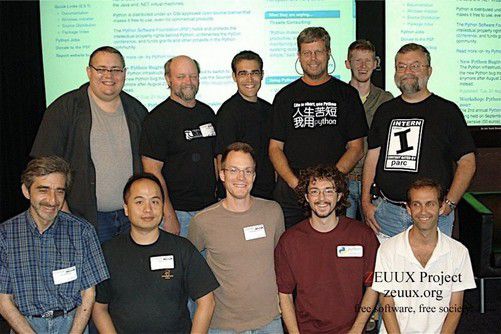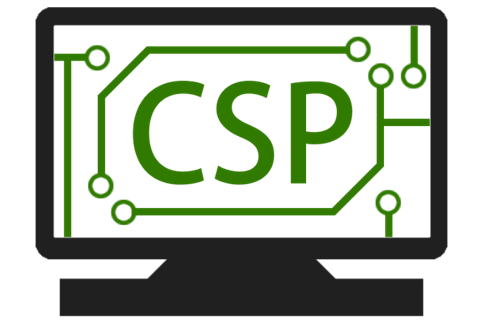
引言
你已经了解: 预处理 -> 编译 -> 汇编 -> 链接 -> 执行
本次课内容: C程序执行的语义
学习处理器设计, 为什么要了解这些?
- 理解C程序的行为, 才能判断处理器执行指令的行为是否符合预期
- 回顾三个状态机产生联系: \(S_C\sim S_{ISA}\sim S_{CPU}\)
C程序执行的语义
C语言标准规范及其实现
和ISA手册定义指令的语义一样, C语言的语义也是通过相应手册定义的
- C语言的标准经过多年的发展, 演进出各种版本
- 包括C90, C99, C11, C17, C23
- 这些版本通常以标准发布的年份来命名
- 例如, C11标准是在2011年左右发布的
- 我们以C99标准为例进行介绍
- 标准规范的本质是一些定义和约定, 通常以手册作为载体呈现
- 为了落实标准规范, 需要将标准规范以某种形式实现出来
- 这样的形式称为标准规范的实现(implementation)
- 通过数字电路将ISA规范实现出来的处理器, 就是ISA的一种实现
C语言标准规范及其实现(2)
C99手册的第3.12节定义了什么是实现:
particular set of software, running in a particular translation environment under
particular control options, that performs translation of programs for, and supports
execution of functions in a particular execution environmentC语言标准的实现是一系列特定软件, 用于将程序翻译到一个特定的执行环境中, 并支持该执行环境中相关功能的执行
- 用我们熟悉的概念去理解:
- 将程序翻译到一个特定的执行环境中 - 编译器
- 这里的编译器是广义的, 包括汇编器和链接器
- 支持该执行环境中相关功能的执行 - 运行时环境
- 将程序翻译到一个特定的执行环境中 - 编译器
- C语言标准的实现 = 编译器 + 运行时环境 = 语言系统
标准规范定义了很多细节,
包括各种应该或者不应该
- 这些属于明确定义的行为, 具体实现的相应行为需要遵循标准规范
执行环境的定义
5.1.2 Execution environments
Two execution environments are defined: freestanding and hosted. In both cases,
program startup occurs when a designated C function is called by the execution
environment... Program termination returns control to the execution environment.执行环境有两种: 独立环境(freestanding)和宿主环境(hosted)
- 由执行环境调用一个专门的C函数, 来启动程序的执行;
程序结束时返回到执行环境
- 回顾: 用
strace观察程序启动和结束
- 回顾: 用
5.1.2.1 Freestanding environment
1. In a freestanding environment (in which C program execution may take place
without any benefit of an operating system), the name and type of the function
called at program startup are implementation-defined.在独立环境中, C程序的执行会在没有操作系统帮助的情况下发生
- 在独立环境下, 这个专门的C函数由具体实现来决定
- 在你的处理器上运行的程序, 就是运行在独立环境中
- 因为你的处理器还运行不了操作系统 😂
执行环境的定义(2)
5.1.2.2 Hosted environments
5.1.2.2.1 Program startup
1. The function called at program startup is named main...相对地, 在宿主环境中, C程序的执行会在操作系统的帮助下发生
- 在宿主环境下, 这个专门的C函数名称为
main - 这是大家学习C语言时接触得比较多的执行环境
- Linux就是一个宿主环境
程序执行的语义
了解C语言标准如何定义程序执行,
有助于进一步认识程序执行的细节
C99手册的第5.1.2.3节定义了程序执行,
我们对这些定义逐条进行说明:
1 The semantic descriptions in this International Standard describe the behavior of
an abstract machine in which issues of optimization are irrelevant.在手册中, 程序执行的语义描述是针对抽象机(abstract machine)而言的, 其中不涉及优化的话题
- 抽象机的概念和我们之前介绍ISA时讨论的模型机很类似
- 都是只讨论其具备的功能和行为, 而不讨论其具体实现
2 Accessing a volatile object, modifying an object, modifying a file, or calling a
function that does any of those operations are all side effects, which are changes
in the state of the execution environment. Evaluation of an expression in general
includes both value computations and initiation of side effects. Value computation
for an lvalue expression includes determining the identity of the designated object.访问volatile对象, 修改对象, 修改文件,
或者调用一个包含上述操作的函数, 都称为副作用,
也即执行环境状态的改变.
对表达式的求值通常包括值的计算和副作用的引入…
程序执行的语义(2)
3 Sequenced before is an asymmetric, transitive, pair-wise relation between
evaluations executed by a single thread, which induces a partial order among those
evaluations. Given any two evaluations A and B, if A is sequenced before B, then the
execution of A shall precede the execution of B. (Conversely, if A is sequenced
before B, then B is sequenced after A.) If A is not sequenced before or after B,
then A and B are unsequenced. Evaluations A and B are indeterminately sequenced when
A is sequenced either before or after B, but it is unspecified which. The presence
of a sequence point between the evaluation of expressions A and B implies that every
value computation and side effect associated with A is sequenced before every value
computation and side effect associated with B. (A summary of the sequence points is
given in annex C.)前序于是针对在一个线程中执行的求值所定义的一个反对称和传递性的二元关系, 通过它可以得到这些求值之间的一个偏序
- 给定两个求值
A和B, 如果A前序于B, 那么A的执行发生在B的执行之前
- 相反地, 如果
A前序于B, 那么B后序于A
- 如果
A既不前序于B, 也不后序于B, 那么A和B是未定序的
- 如果
A前序于B, 或者A后序于B, 但未指定何者, 则称A和B是不确定序的
- 如果
A和B之间存在一个序列点, 那么, 和A相关的所有值的计算和副作用, 都前序于和B相关的所有值的计算和副作用 (序列点见附录C)
程序执行的语义(3)
第3条内容借助序列点的概念, 严格定义了不同求值操作之间合法的顺序关系
- 结合副作用, 从而严格定义了整个程序执行的语义
以下程序输出什么?
事实上, 这个程序可能输出任意的函数调用顺序
- 在同一个表达式语句中, 多个函数调用之间是不确定序的, 因此它们可以按任意顺序调用
- 如果程序的行为依赖于某种调用顺序, 执行结果有可能不符合预期
程序执行的语义(4)
4 In the abstract machine, all expressions are evaluated as specified by the
semantics. An actual implementation need not evaluate part of an expression if it
can deduce that its value is not used and that no needed side effects are produced
(including any caused by calling a function or accessing a volatile object).- 在抽象机中, 所有表达式都按照相应的语义进行求值
- 在一个具体实现中, 如果一个表达式中的其中一部分的值没有被使用,
也没有产生副作用(包括由调用函数和访问
volatile对象引起的副作用), 那么, 这部分表达式可以不进行求值
第4条内容其实指示了表达式求值过程中的优化空间
5 When the processing of the abstract machine is interrupted by receipt of a signal,
the values of objects that are neither lock-free atomic objects nor of type volatile
sig_atomic_t are unspecified, as is the state of the floating-point environment. The
value of any object modified by the handler that is neither a lock-free atomic
object nor of type volatile sig_atomic_t becomes indeterminate when the handler
exits, as does the state of the floating-point environment if it is modified by the
handler and not restored to its original state.第5条内容和信号机制相关, 超出当前学习范围, 这里不展开说明
程序执行的语义(5)
6 The least requirements on a conforming implementation are:
— Accesses to volatile objects are evaluated strictly according to the rules of the
abstract machine.
— At program termination, all data written into files shall be identical to the
result that execution of the program according to the abstract semantics would
have produced.
— The input and output dynamics of interactive devices shall take place as specified
in 7.21.3. The intent of these requirements is that unbuffered or line-buffered
output appear as soon as possible, to ensure that prompting messages actually
appear prior to a program waiting for input.
This is the observable behavior of the program.- 一个符合规范的实现至少需要满足3点要求:
- 这就是之前提到的
程序可观测行为的一致性
- 这就是之前提到的
CEMU: 用程序实现C语言状态机
回顾: C语言标准手册定义了一个状态机
- 状态集合\(S = \{<PC, V>\}\)
- \(V = \{v_1, v_2, v_3, \dots\}\) = 程序中所有变量的取值
- \(PC\) = 程序计数器 = 当前执行的语句位置
- 激励事件\(E = \{语句\}\)
- 执行PC指向的语句, 改变程序的状态
- 状态转移规则\(next: S \times E \to
S\)
- 语句的语义(semantics)
- 初始状态\(S_0 = <main函数的第一条语句, V_0>\)
我们可以把这个状态机实现出来, 用它来执行C程序!
- 这里我们假设C程序运行在宿主环境
CEMU = C语言解释器 = 用程序实现C语言状态机
import sys,re
# prepend an empty line to let PC starts from 1
srcs = [''] + list(map(lambda s: s.strip(), sys.stdin.read().split('\n')))
# set PC to the next line of "int main"
state = {'PC': i + 1 for i, line in enumerate(srcs) if line.startswith('int main') }
labels = {} # record mappings of label -> PC
[labels.setdefault(line.rstrip(':'), i) for i, line in enumerate(srcs) if re.match(r'^\w+:', line) != None]
semantics = [
(r'^int\s+(\w+)\s*;$', lambda s, p: exec(re.sub(p, r'\1 = 0xdeadbeef', s), {}, state)),
(r'^int\s+(\w+)\s*=\s*(.+)?;$', lambda s, p: exec(re.sub(p, r'\1 = \2', s), {}, state)),
(r'^\w+\s*=.+\s*;$', lambda s, p: exec(s, {}, state)),
(r'^printf\s*\(.+\)\s*;$', lambda s, p: exec(s, {'printf': lambda fmt, *args: print(fmt % args, end='')}, state)),
(r'^return\s+(.+)\s*;$', lambda s, p: (print('Exit with %d' % eval(re.sub(p, r'\1', s), {}, state)), exit())),
(r'^\w+:$', lambda s, p: 0), # do nothing
(r'^if\s*\((.+)\)\s*goto\s+(\w+)\s*;$',
lambda s, p: exec(re.sub(p, r'if \1: PC = labels["\2"]', s), {'labels': labels}, state)),
(r'^.*$', lambda s, p: print("Not implement: " + s)),
]
while True:
print(state)
stmt = srcs[state['PC']] # read one line of statement
for pattern, fn in semantics:
if re.match(pattern, stmt) != None: # parse it with regular expression
fn(stmt, pattern) # execute according to the semantics
break
state['PC'] = state['PC'] + 1 # read PC again, since it may be changed by the if statement解释 = 以源语言的语句为对象逐条执行
- 例如, Shell就是一个命令行解释器
- 和编译不同, 后者先翻译成目标语言, 再执行目标语言
- 但同样通过解释方式来执行目标语言
通过CEMU观察C程序执行的过程
为了方便演示, CEMU只支持少部分较为固定的C语言语法
人生苦短, 我用python
通过各种高级语言特性轻松实现CEMU
- 开箱即用的字符串处理函数:
strip(),split(),startwith() - 方便的容器: 列表, 元组, 字典(可用字符串索引)
- 及其迭代操作:
for ... in ...,map
- 及其迭代操作:

- 用正则表达式匹配C语句
- 用lambda函数实现C语句的语义
- 黑科技:
exec()和eval()- 把字符串当作python代码来执行
如果用C语言来实现, 代码量至少翻10倍
CEMU的本质
状态机的4个要素同样存在
- \(S=\{<V, PC>\}\):
state字典 - \(next\):
semantics列表
- \(E\):
while的循环体 - \(S_0\):
state的初值
根据C语言的语义执行语句, 改变程序的状态
- 取语句, 解析, 执行, 更新PC
CEMU提供的运行时环境
CEMU运行在python环境中, 可以借助python的功能来向C程序提供运行时环境
- 程序运行前 - 通过
sys.stdin.read()读入C程序 - 程序运行中 -
通过python的
printf()实现C程序的printf() - 程序运行后 - 通过
exit()退出CEMU, 同时也退出C程序
一个反直觉的案例
一个案例

| 32位 | 64位 | |
|---|---|---|
| C90 | TT | FT |
| C99 | FT | FT |
2147483648究竟如何被识别
根据clang输出的AST,
整理不同组合下2147483648的类型
| 32位 | 64位 | |
|---|---|---|
| C90 | unsigned long |
long |
| C99 | long long |
long |
输出结果与2147483648的符号有关
- 识别成有符号数 -> 不等式左边结果为负数(\(-2^{31} + 6\)) ->
输出
F - 识别成无符号数 -> 不等式左边结果为很大的正数(\(2^{31} + 6\)) -> 输出
T
结合AST输出和手册描述
- 64位环境下
long可以表示2147483648->long是64位 - 32位环境下
long不能表示2147483648->long是32位
猜想: long在32位环境下长度是32位,
在64位环境下长度是64位
怎么验证/推翻这个猜想?
动手写个小程序就可以啦
为什么会这样?
C语言标准无法精确定义的行为
为什么会这样?
C99的Abstract
... Its purpose is to promote portability, reliability, maintainability, and
efficient execution of C language programs on a variety of computing systems.- 要支持现有的计算机系统, 于是很多规定不能说太死
- C标准连1个字节是多少都不能定义(历史上1~48比特都用过) 😂
- 要支持将来的计算机系统, 于是很多规定也要给未来留个口
- 交给未来去定义
- 希望执行高效, 就要给编译器留出尽可能多的决策空间
- 所以
前序于是个偏序, 而不是全序
- 所以
未指定行为(Unspecified Behavior)
use of an unspecified value, or other behavior where this International Standard
provides two or more possibilities and imposes no further requirements on which is
chosen in any instanceC标准提供了多种行为可选, 具体实现需要从中选择一种
例: 函数调用时参数求值顺序是unspecified
C语言标准的意图: 让编译器根据实际情况选择一种高效的求值顺序
未指定行为(Unspecified Behavior)(2)
- 使用同一个编译器的不同的版本, 也可能会得到不同的运行结果
- 更极端地, 某编译器通过随机方式决定函数调用时的参数求值顺序, 仍然符合C语言标准!
实现定义行为(Implementation-defined Behavior)
一类特殊的未指定行为, 具体实现需要将选择写到文档里
- 写进文档之后就不能随便改了
- 具体实现不仅需要遵循C语言标准, 还需要遵循自己的文档
- 包含这种行为的程序,
在特定的环境下(包括编译器和运行时环境)多次编译运行,
仍然那可以得到相同的结果
- 但在移植到另一个环境时可能会出现问题
例子: 整数类型的长度
C语言标准并没有明确定义类型的长度
- 不过定义了类型取值的最小范围, 具体实现可以采用更大的范围
| 部分例子 | 取值 | 说明 |
|---|---|---|
INT_MIN |
\(-(2^{15}-1)\) | int的最小值 |
INT_MAX |
\(2^{15}-1\) | int的最大值 |
UINT_MAX |
\(2^{16}-1\) | unsigned int的最大值 |
INT_MIN不取\(-2^{15}\), 是考虑到过去有些计算机采用原码或反码- 只定义类型取值的最小范围, 给将来留空间
- Turbo
C(DOS环境下的C编程IDE)中的
int是16位 - VC 6.0中的
int是32位 - 不过如今的64位环境中,
int还是32位
- Turbo
C(DOS环境下的C编程IDE)中的
区域特定行为(Locale-specific Behavior)
behavior that depends on local conventions of nationality, culture, and
language that each implementation documents一类特殊的实现定义行为, 行为的结果依赖于国家地区, 文化和语言的本土习惯
例: 扩展字符集中包含哪些字符
- 在支持中文字符的实现中, 程序可以成功编译并运行
- 但在只支持基本字符集(即ASCII字符集)的实现中,
程序无法通过编译(
gcc -ansi)
开发国际化软件(即i18n)时需要考虑
- 还有小数点字符, 货币符号, 时间和日期格式
- 一生一芯中无需考虑
#include <stdio.h>
#include <string.h>
#include <stdlib.h>
#include <assert.h>
#define 主函数 main
#define 返回 return
char* 字符串拼接(char *串1,
char *串2) {
char *新串 = malloc(
strlen(串1) +
strlen(串2) + 1);
assert(新串);
strcpy(新串, 串1);
strcat(新串, 串2);
返回 新串;
}
int 主函数() {
char *信息 = 字符串拼接(
"一生一芯", "很简单");
printf("%s\n", 信息);
free(信息);
返回 0;
}未定义行为(Undefined Behavior)
behavior, upon use of a nonportable or erroneous program construct or of erroneous
data, for which this International Standard imposes no requirements程序/数据不符合标准的行为, C语言标准对其结果不作任何约束
- 一切皆有可能: 无论发生什么, 都符合C语言标准
C99手册列举了一些可能的结果:
Possible undefined behavior ranges from ignoring the situation completely with
unpredictable results, to behaving during translation or program execution in a
documented manner characteristic of the environment (with or without the
issuance of a diagnostic message), to terminating a translation or execution
(with the issuance of a diagnostic message).包含这种行为的程序, 多次运行可能也无法得到正确的结果
学会RTFM
- 想了解一切细节发生的依据,
RTFM是唯一正确的选择
- C99手册的附录J列出了C语言标准中无法精确定义的所有行为
大部分C语言的材料没有覆盖到类似的概念及其定义
- 你可能是第一次听说
未定义行为和序列点这些概念 - 因此不要过分迷信书籍和博客
- 书籍和博客的作者对C语言的认识, 比不上C语言标准的制定者
正确的学习方法:
- 阅读书籍入门, 能解决95%的问题(足够你通过考试)
- 阅读手册, 解决剩下5%的问题, 成为专业人士
- 不是把手册背下来, 而是培养阅读手册的意识: 当你想彻底弄清楚一个问题, 你应该想到阅读手册的相关内容
开放讨论 - 为什么还要学习C语言?
“使用语言”和 “学习计算机”的目的不完全相同
- 使用语言的目标是提高效率
- 开发者友好的语言特性, 更抽象也更安全的功能, 各种开箱即用的库
- 例 - 数组越界不再是UB, 而是由运行环境马上报错
- 这些功能需要更复杂的翻译环境和运行环境来支撑
- 作为计算机的使用者,
我们应该掌握1~2门现代语言提升工作效率
- python, bash, go, rust, …
- 开发者友好的语言特性, 更抽象也更安全的功能, 各种开箱即用的库
- 学习计算机的目标是理解程序如何在计算机上运行
- 语言越接近底层硬件, 越有利于我们学习其中的细节
- 例 - ISA状态机没有数组越界的概念
- 作为计算机的设计者, 我们应该掌握C语言, 理解计算机的基本原理
- 语言越接近底层硬件, 越有利于我们学习其中的细节
开放讨论 - 公司不一定完全按标准来实现
- 从一个领域来看, 遵循标准有利于领域的稳定和繁荣
- TCP/IP(网络), SQL(数据库), OpenGL(图形), 3GPP组织(通信), …
- 如果一家公司选择不遵循按标准中的某些要求, 那么
- 它需要声明其产品在哪些场景不兼容标准, 让用户选择是否接受
- 如果一套标准过于糟糕, 公司不愿意遵循, 那么, 对这个领域来说
- 最好的做法是建立另一套更好的标准
- 而不是进入七国八制的状态(1987年中国通信市场)
- 公司选择不完全按标准来实现, 属于个体决策
- 标准的意义体现在更宏观的层面: 对领域技术的创新, 应用和演进
- 扩展阅读 - RISC-V:全球共有开放标准,全力推进开放计算
应用程序二进制接口(ABI)
C语言标准的具体实现和ABI
回顾C语言标准的具体实现:
- 编译器 - 负责生成程序的二进制可执行文件
- 二进制可执行文件和ISA相关, 程序也是在相应ISA的处理器上执行
- 运行时环境 - 负责支撑程序的运行
- 包含库函数和操作系统的部分功能, 程序在运行的前, 中, 后都需要和它们交互
作为一个计算机系统的整体, 程序, 编译器, 操作系统, 库函数, ISA这些概念之间存在关联
- 一般通过约定和规范来呈现, 这就是ABI(Application Binary Interface)
- ABI是程序在二进制层面与上述概念之间的接口规范
实现定义行为的选择写到了哪个文档里?
C语言标准要兼容各种计算机系统, 无法精确定义很多行为的结果
但对于一个特定的计算机系统, 很多条件是确定的
- ABI作为这个计算机系统在二进制层次的约定, 可以看成是C语言标准的一种具体实现的文档
- 对于C语言标准层次中的很多实现定义行为, 其选择都会写入ABI中
例: 对于特定的ISA, 字节和通用寄存器的位宽都是确定的
- ABI可以确定C语言标准中整数类型的取值范围
- 整个计算机系统对整数类型取值范围的理解都会遵循ABI
- 计算机系统的各部件达成一致, 共同支撑程序的运行
RTFM: ABI中定义的基本数据类型
- System V ABI for i386 - 32位x86 Linux遵循的ABI
- ABI for RISC-V
Q: 如何使用跨平台固定长度的数据类型?
A: #include <stdint.h>
- 运行库会帮我们定义成正确的类型
A: char的符号也是implementation-defined的
- 启示: 不要直接用
char来进行算术运算- 用
signed char或unsigned char
- 用
ABI和计算机系统
ABI作为一种规范, 其内容包括:
- 处理器的指令集, 寄存器结构, 栈的组织, 访存类型等
- 处理器可直接访问的基本数据类型的大小, 布局, 对齐方式
- 调用约定, 用于规定函数的参数如何传递, 返回值如何获取
- 应用程序如何向操作系统发起系统调用
- 目标文件的格式, 支持的运行库等
- 程序在特定计算机系统上的运行结果, 与源代码, 编译器, 运行时环境, ISA, 硬件等都有关联
- ABI是计算机系统软件和硬件互相协助, 共同支撑程序运行的重要体现
总结
C程序的执行
- C语言标准的实现 = 编译器 + 运行时环境 = 语言系统
- 两种执行环境: 独立环境, 宿主环境
- 程序的执行: 副作用, 前序于, 抽象机, 程序可观测行为的一致性
- CEMU = C语言解释器 = 用程序实现C语言状态机
- C语言标准中除了精确描述的行为, 还包含
- Unspecified Behavior
- Implementation-defined Behavior
- Undefined Behavior
- 通过ABI手册了解Implementation-defined Behavior的选择
- 同时认识C语言标准, 编译器, 操作系统, 运行库, 处理器之间的协助
- 程序的运行结果与源代码和上述因素都有关系


